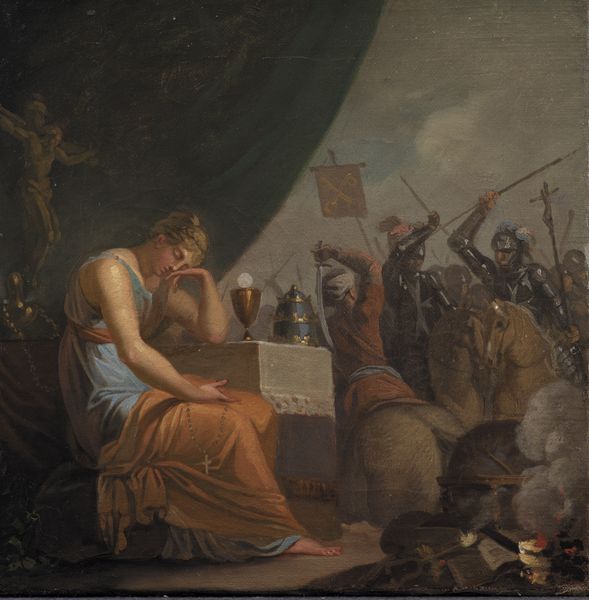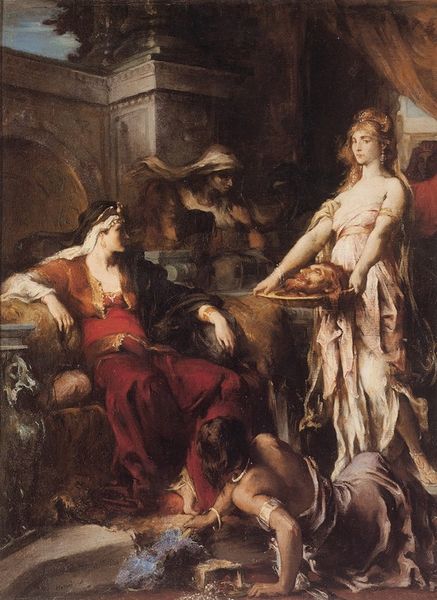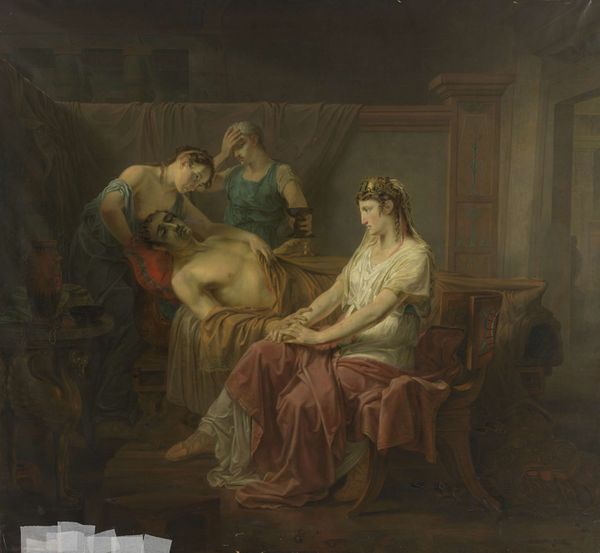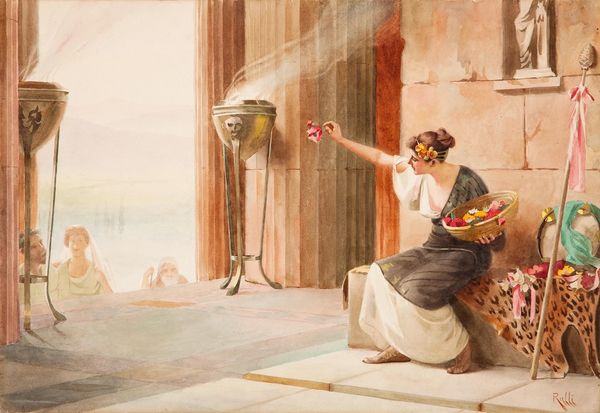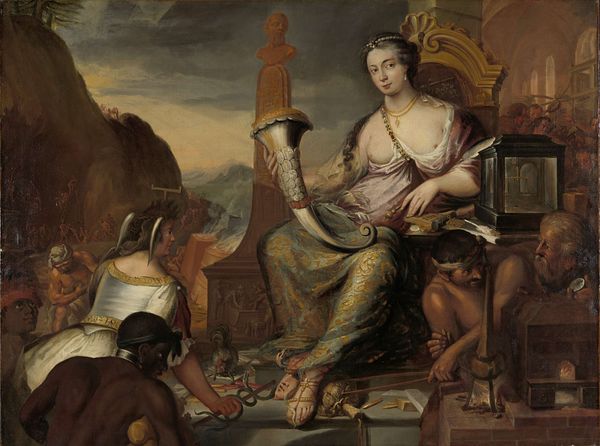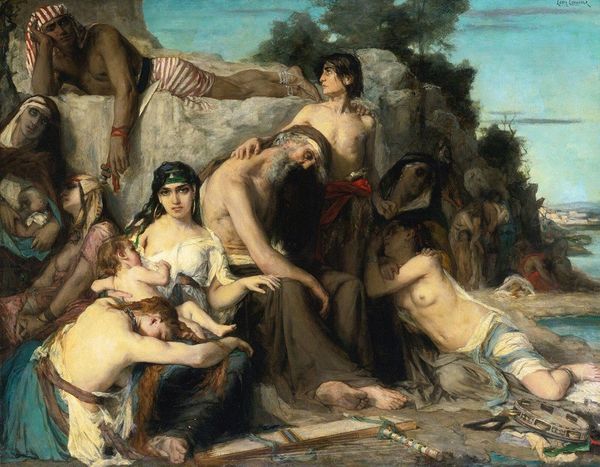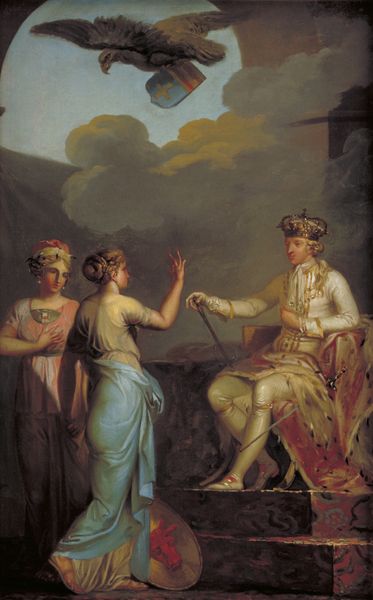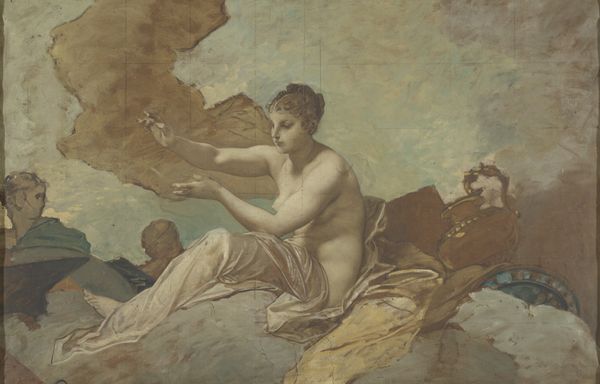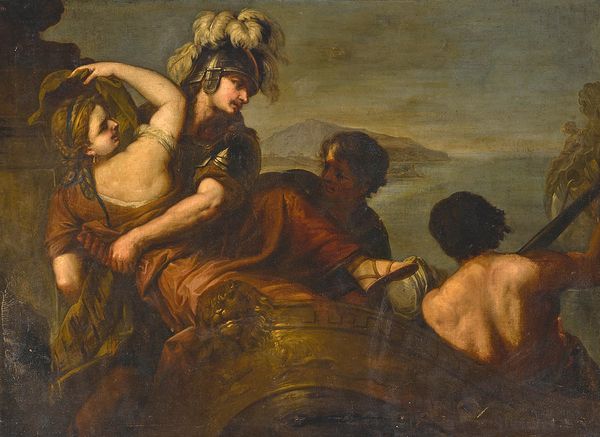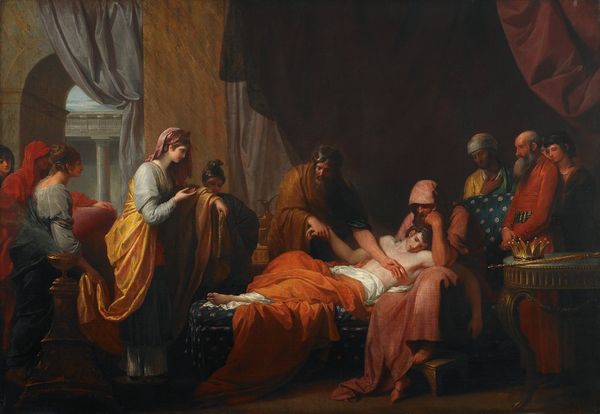
The Revival of Learning, the Invention of Printing and Gunpowder and the Discovery of America 1784
0:00
0:00
Dimensions: 29.5 cm (height) x 29.5 cm (width) (Netto), 37.7 cm (height) x 37.7 cm (width) x 3.8 cm (depth) (Brutto)
Curator: Here we have Nicolai Abildgaard’s “The Revival of Learning, the Invention of Printing and Gunpowder and the Discovery of America,” created in 1784. Editor: It’s striking, almost theatrical. There's a strong chiaroscuro effect, throwing that chained figure into dramatic relief. The cannon and globe hint at something more than just academic pursuits. Curator: Absolutely. Abildgaard, a key figure in Danish Neoclassicism, layers symbolism to critique power. The shackled man, representing ignorance, is literally and figuratively chained by enlightenment. Notice the spectral figures behind Minerva. Editor: They're almost like hazy ghosts, signifying different eras or breakthroughs. I'm drawn to the cannon though. It sits rather casually at Minerva’s feet, forged from metal, reminding us of technological advance's entanglement with warfare and control. How are we to understand it in relation to other tools nearby? Curator: The printing press is also key. We need to acknowledge the materiality of books as conduits of power but also spaces of revolutionary thinking. Note Minerva holds the keys to ignorance's shackles. Her power isn’t brute strength. Editor: She embodies a powerful and contradictory position, overseeing progress while, perhaps unintentionally, facilitating oppression through technologies like gunpowder. There is such potential in science to create both great structures and great devastations. The question becomes, whose hands guide that creation? Curator: The work as a whole prompts reflection on Europe’s self-image during this period. We are compelled to critically interrogate the supposed virtues of the “age of enlightenment," specifically in contrast to colonized peoples across the Americas. Abildgaard, by showing us these themes together, encourages further probing, especially regarding history's actors. Editor: It really shows how material inventions intertwine with progress and exploitation. And perhaps how the artist, himself, grapples with that interplay through pigment, brush, and canvas. A rich meditation, certainly. Curator: Precisely. This artwork offers a reminder that progress is not linear and asks who pays the price. Editor: I agree; there’s so much here to unpack concerning production and its far-reaching impact, presented skillfully using oil on canvas.
Comments
No comments
Be the first to comment and join the conversation on the ultimate creative platform.
